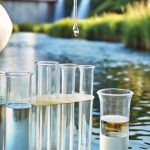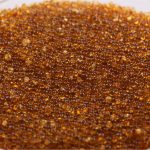Have you ever looked at a glass of clear, refreshing water and wondered how it got there? It might seem like magic, but it’s actually the result of a fascinating scientific process called water treatment process. Imagine this: you’re by a river, and the water looks anything but inviting – it’s cloudy, maybe even brown. But with the power of water treatment, that very same water can be transformed into the sparkling liquid that quenches your thirst.
At IonExchange, with over 60 years of experience, we’re passionate about ensuring clean water for everyone. In this blog, we’ll unveil the steps involved in water treatment process, turning that question of “Is this water safe to drink?” into a confident “Yes!”
Table of Contents
ToggleWater Treatment Process Step by Step
Understanding the step-by-step journey water takes from its raw state to being safe for consumption is key to appreciating the significance of water treatment. Let’s explore the step-by-step process it goes through to become drinkable.
- Coagulation: The Great Get-Together
Heavily contaminated water contains various unwanted elements, such as dirt, sediment, and microscopic organisms. Coagulation is like sending out special invitations to these unwanted guests. We introduce positively charged chemicals that act like magnets, attracting the negatively charged impurities in the water. These impurities clump together, forming bigger and easier-to-remove particles.
- Flocculation: Making Friends, Big Time
Now imagine gently stirring the party after everyone’s had a chance to mingle with the “magnets.” Flocculation is that gentle mixing that encourages the tiny clumps formed in coagulation to join forces and create even larger and heavier “flocs.” These flocs are much easier to remove from the water than the individual particles were.
- Sedimentation: Letting Gravity Do the Work
Picture yourself at the beach, watching pebbles sink to the bottom of the clear water. Sedimentation is like that, but on a much smaller scale. The heavy flocs created in flocculation are denser than water, so they begin to settle at the bottom of large tanks. These tanks provide a calm environment for the flocs to separate from the cleaner water above.
- Filtration: The Super-Sieve
Even after sedimentation, some microscopic particles might still be lurking in the water. Filtration acts like a super-sophisticated sieve, removing any lingering impurities (another water treatment process step). Water is passed through layers of sand, gravel, or even specialized membranes with tiny pores that trap any remaining unwanted particles.
- Disinfection: The Final Fortress
This is the crucial step that ensures the safety of your drinking water! Disinfection acts like a final security guard, eliminating any harmful bacteria, viruses, or parasites that might have survived the previous steps. We use disinfectants like chlorine or ultraviolet light to neutralize these threats, ensuring your water is safe to consume.
Bonus Step: Adding the Good Stuff Back In
Depending on the source of the raw water, some minerals might be naturally low. Public water treatment facilities may add minerals back into the water to improve taste and promote overall health. Examples of these minerals include calcium and magnesium, which can contribute to bone health.
Beyond the Basics: Different Types of Water Treatment
The five steps outlined above are the foundation of most municipal water treatment plant processes. However, depending on the specific source water and its unique contaminants, additional treatment methods might be necessary. Here’s a glimpse into some of the other technologies used in water treatment:
- Reverse Osmosis: This process uses pressure to force water through a semi-permeable membrane, leaving behind impurities on one side while allowing clean water to pass through on the other. This technology is particularly effective for removing dissolved salts and other hard-to-remove contaminants.
- Activated Carbon Filtration: Activated carbon is a highly absorbent material with a vast surface area. Water is passed through beds of activated carbon, which traps organic chemicals, unpleasant tastes, and odors.
- Deionization: This process removes dissolved mineral salts from water. It’s often used in industrial applications where high-purity water is needed.
- Softening: Hard water, high in minerals like calcium and magnesium, can cause problems with soap scum and scale buildup in pipes. Water softening removes these minerals, making the water “softer” and improving its overall usability.
Common Problems in Water Treatment
Even with these sophisticated processes in place, water treatment plants can still face challenges. Here are some of the most common problems encountered:
- Variation in Raw Water Quality: Water sources like rivers and lakes can experience fluctuations in turbidity (cloudiness), flow rate, and even the presence of contaminants depending on weather patterns and human activity. Effective water treatment plants need to be adaptable to handle these variations.
- Improper Training or Maintenance: Water treatment is a complex process, and properly trained staff is essential for its smooth operation. Regular maintenance of equipment is also crucial to ensure optimal performance.
- Equipment Failure: Like any machinery, water treatment equipment can malfunction or break down. Regular maintenance helps to minimize this risk, but unforeseen breakdowns can occur. Having backup systems and protocols in place is essential to ensure uninterrupted clean water production.
- Emerging Contaminants: New contaminants, such as pharmaceutical products and industrial chemicals, are constantly being introduced into the environment. Water treatment plants need to stay updated on these emerging threats and be prepared to adapt their processes to address them.
- Membrane Fouling: In some treatment processes, membranes are used to filter out impurities. Over time, these membranes can become clogged with microscopic particles, reducing their effectiveness. Regular cleaning and maintenance is necessary to keep membranes functioning properly.
- Balancing Cost and Efficiency: Water treatment plants need to strike a balance between effectively removing contaminants and keeping costs manageable. Finding the right balance often involves careful optimization of treatment processes and using the most cost-effective technologies available.
IonExchange: Your Partner in Safe and Clear Water
For over six decades, IonExchange has been a leader in water treatment solutions. We understand the challenges faced by water treatment plants and are here to help. We offer a comprehensive range of technologies, from cutting-edge filtration systems to expert water analysis services. Our team of specialists can help you design, implement, and maintain a water treatment system that is efficient, cost-effective, and capable of handling even the most complex challenges. Looking for more information? Contact our water treatment specialists today, and discuss more for transforming your water treatment concerns into crystal-clear solutions!







